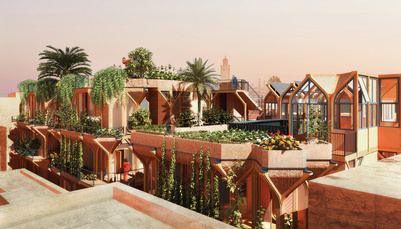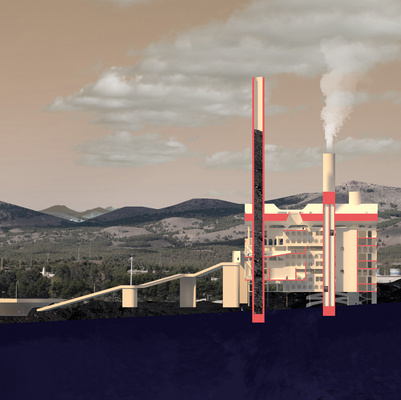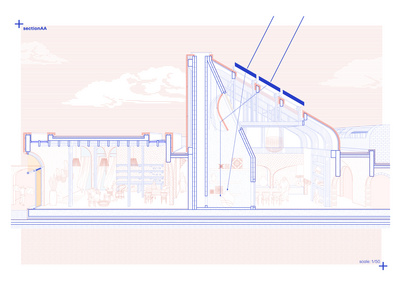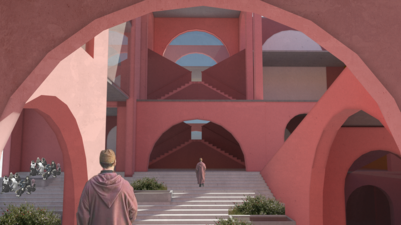Flood-resilient architecture with building integrated carbon capture and wastewater treatment systems for the city of Agadir. The project revisits architectural form and explores how extreme sites can be reinvented in architecture in order to turn challenges into assets. Cladded in sacrificial CO2 absorbent clay modules, the facade acts as a filter, cleaning and reusing its own wastewater while capturing Carbon from the ambient air


Throughout my month-long fieldwork in Agadir, I found that there is a lack of accessible public and communal spaces for interaction and exchange of ideas, which from my perspective are important spaces to strengthen the quality of the urban environment. Furthermore, I found that there is a lack of green and blue public spaces within the city, allowing for relaxation and social interaction. In addition, there is a need for spaces that can be used to educate Architecture students, hence there is currently an ongoing official competition for an Architecture school in Agadir. To meet these challenges, the building bridges outdoor and indoor public spaces and educational facilities and houses an Architecture school with workshop spaces, studio spaces, and laboratories, a library connected to indoor gardens, exhibition spaces connected to public auditoriums, and a bathhouse with hammam and swimming pool.
Probably two of the largest environmental concerns in cities today are carbon emissions and air quality and cities are under increased pressure to demonstrate plans to control & reduce their CO2 emissions. Carbon capture could play a central role in helping the nations advance sustainable management and reduction of greenhouse gas emissions. By capitalizing on the properties of Moroccan clay, which presents itself as a CO2 adsorbent, local and cheap material, this project uses and reuses its wastewater to capture carbon, enhance plant growth and counter air pollution.
































































